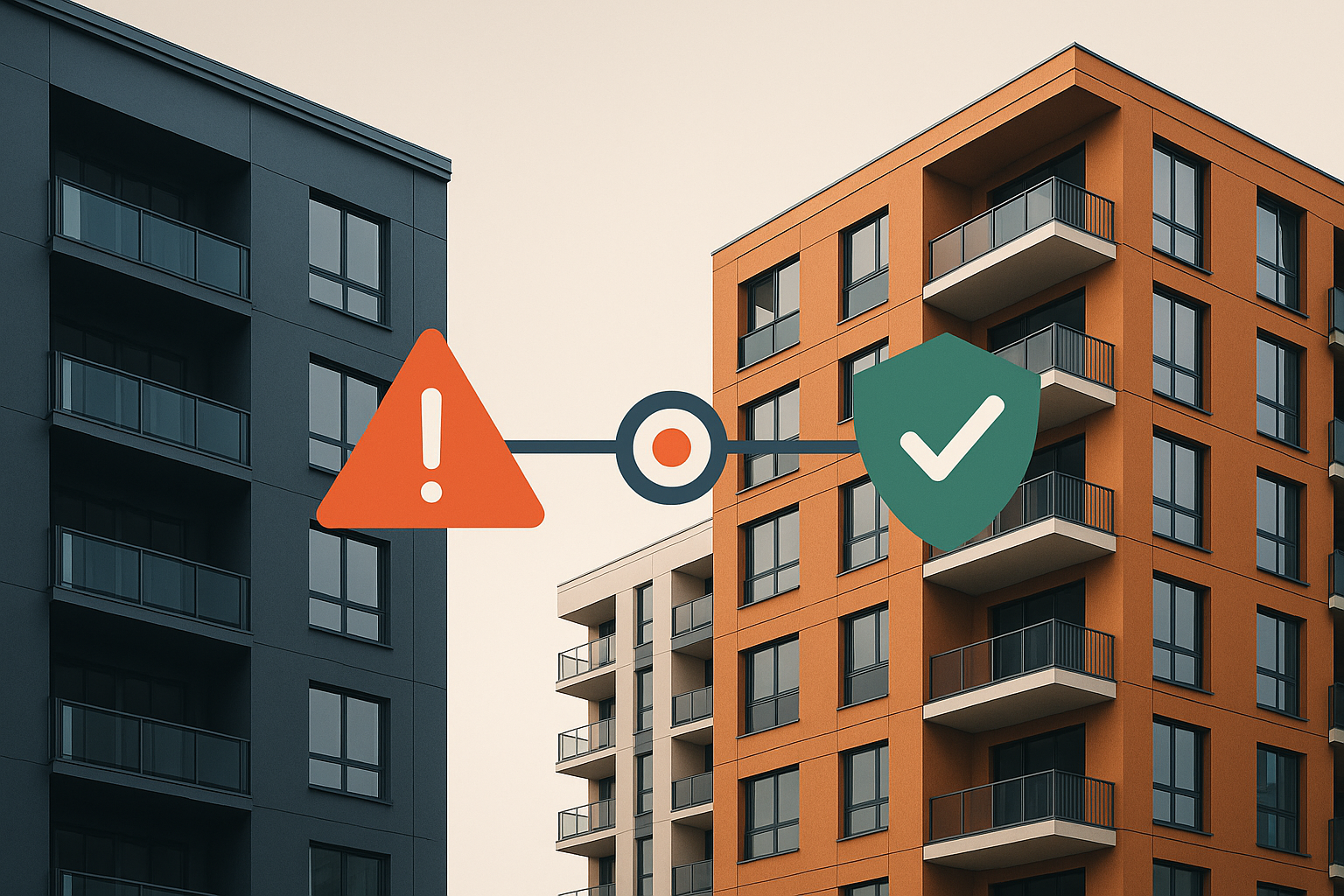The Cost of Protection: Insurance Squeeze Threatens Affordable Housing



A crisis is unfolding in the United States, with over 1.7 million low-income families across the country facing a threat from soaring insurance premiums.
A recent survey commissioned by the National Leased Housing Association (NLHA), involving over 400 affordable housing providers, highlights the alarming increase in insurance costs. The survey shows that from 2022-2023, twenty-nine percent of providers experienced insurance rate hikes exceeding twenty-five percent - nearly double the figure from just two years earlier. The cost pressures extend across other policies, with a quarter of providers facing liability coverage increasing above twenty-five percent.
This surge in insurance costs is attributed to a perfect storm causing an exodus of insurers. Limited insurance market capacity, escalating claims, and stricter reinsurance are colliding with higher-risk affordable housing portfolios concentrated in disaster-prone areas like California and Florida. Faced with diminishing profits in the sector, insurers either abandon the market in large numbers or increase rates to mitigate losses.
In response, housing providers are reacting by cutting operating costs, increasing deductibles, and raising rents. Unfortunately, these actions adversely affect the quality and affordability of housing for vulnerable renters.
The Ripple Effects Across Housing
The repercussions of escalating insurance costs are prompting affordable housing providers to explore various avenues to alleviate the financial strain. A significant majority, over ninety percent, expressed their intention to act. Common measures include raising deductibles, reducing operating budgets, and increasing rents where possible.
Unfortunately, these cost-cutting measures have a cascading effect on renters, particularly those in the low-income bracket. More than sixty percent of surveyed properties cater to low-income families, defined as any household with an income of 80 percent or less of the area median. The consequence is a precarious situation where the quality and availability of affordable homes are at stake.
Constrained by limited budgets, many housing providers are contemplating cuts to essential maintenance, repairs, and housing improvements. Additionally, plans are underway to suspend upgrades to properties constructed before 1990, accounting for forty-three percent of the surveyed housing units. Despite the provider’s efforts to shield tenants from rental increases, the impact of higher premiums is already evident in rent hikes, disproportionately affecting tenants least capable of absorbing such financial burdens.
Insurers Underscore Market Instability
Significant financial risks underscore the withdrawal of insurers from the affordable housing sector. Seventy percent of 2022-2023 policy renewals point to limited carrier capacity and market instability as the primary factors driving premium increases across property and liability lines.
The surge in property insurance premiums can be attributed to historically high catastrophe losses experienced in recent years, prompting reinsurers to restrict coverage for insurers underwriting affordable multifamily policies.
Even when coverage is made available, the associated rates have skyrocketed. In the case of 2022 renewals, property premium increases exceeded valuation gains by a ratio of over 4 to 1. Faced with diminishing profits and escalating risks, insurers view the affordable housing market as inherently perilous.
Progress Hinges on Stakeholder Teamwork
The advancement of solutions in the affordable housing sector hinges on collaborative efforts among stakeholders. Without an insurance safety net, affordable housing properties risk falling into neglect and disrepair. More concerning is the possibility of some property owners abandoning the affordable sector altogether, opting to convert units into more lucrative market-rate housing.
Addressing the challenge of expanding insurance availability and affordability necessitates a unified front involving housing providers, insurers, lawmakers, and regulators. Potential solutions range from a flexible approach to deductibles, limits to adopting pooled insurance risk models and establishing public reinsurance facilities. Innovative solutions, such as alternative risk transfer and structured finance, also present viable options.
One thing is clear - America faces an ever-widening gap between the supply of affordable rental housing and the escalating demand. Allowing the insurance crisis to further constrain properties catering to low and moderate income families will only worsen this divide.
The time has come for generating creative ideas and concerted action to fortify the insurance safety net for affordable housing in the face of mounting market challenges. The security of shelter for over 1.7 million vulnerable households hangs in the balance, emphasizing the urgency of collaborative efforts and innovative solutions to safeguard the future of affordable housing in America.
Sources:
National Leased Housing Association. (2022). Affordable Housing Insurance Survey.
Smith, J. (2021). The Affordable Housing Insurance Crisis. Journal of Housing Policy.
Grace Hill. (2021). Survey of Affordable Housing Residents.
Entrata. (2022). Resident Default Benchmark Report.
San Francisco Rent Board. (2022). Housing Statistics for San Francisco.

Steve Zaleski, Senior Managing Director, Multifamily Solutions, Assurified, Inc. Stephen (Steve) Zaleski is an accomplished real estate investment executive and leader with over 30 years of experience in acquisitions, development, and dispositions totaling $15 billion. Steve's background spans sourcing, underwriting, closing, and managing real estate assets across property types, with extensive experience in multifamily. He has cultivated an expansive principle and broker network, enabling him to identify and reposition underperforming properties. Steve is known for assembling top-performing teams and leading them to optimize returns. He pairs his wealth of institutional knowledge with a hands-on approach. Steve has led fundraising for numerous funds and has a reputation for certainty of execution. Steve holds a B.A. in Political Science and Economics from Bates College. Outside of work, he is actively involved with several nonprofits focused on youth education and mentoring.




